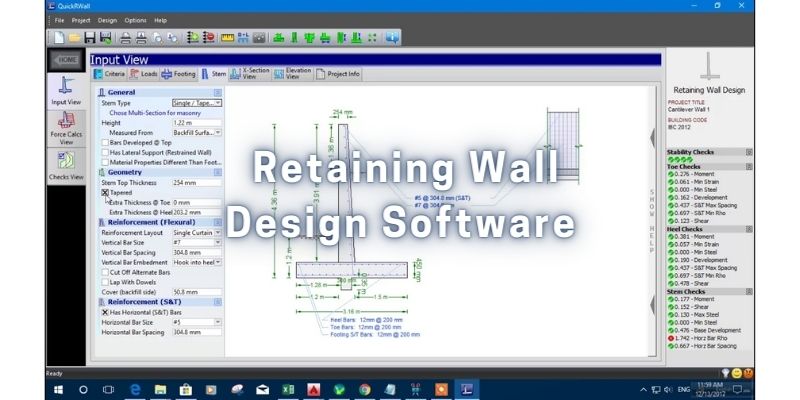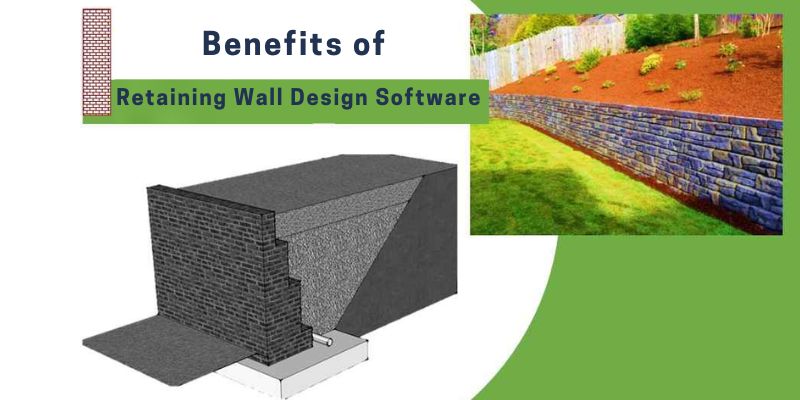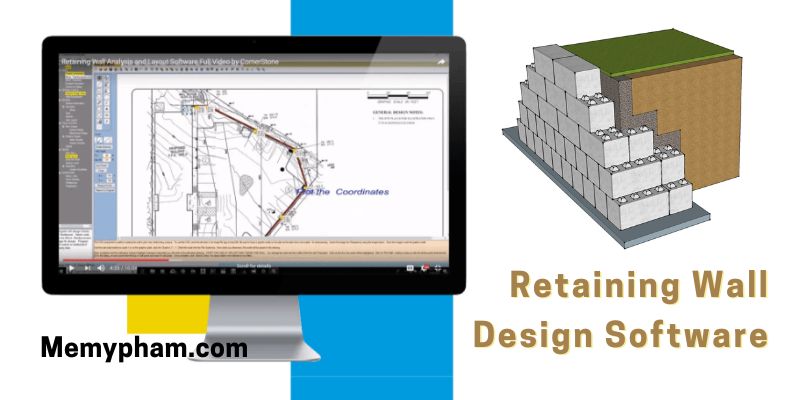In the realm of civil engineering and construction, the utilization of advanced technology has significantly impacted the efficiency and precision of various processes. One such technological marvel that has gained prominence in recent years is retaining wall design software. This innovative software by Memypham plays a pivotal role in simplifying the complex task of designing and constructing retaining walls. As the demand for robust infrastructure continues to rise, engineers and architects are increasingly turning to these cutting-edge tools to streamline their workflow and enhance project outcomes.
Understanding Retaining Walls
Before delving into the intricacies of retaining wall design software, it is essential to comprehend the fundamental purpose and significance of retaining walls in construction projects. Retaining walls are structural elements designed to restrain soil and prevent erosion in areas where abrupt changes in elevation occur. These walls are crucial for stabilizing slopes, supporting embankments, and creating level surfaces for various applications, such as roads, buildings, and landscaping.

The Challenges of Traditional Design Approaches
In the past, engineers relied on traditional methods and manual calculations for retaining wall design. These methods were not only time-consuming but also prone to errors, leading to suboptimal designs and potential safety hazards. The complexity of factors involved, including soil properties, water pressure, and external loads, made manual calculations a daunting task. Recognizing these challenges, the engineering community sought innovative solutions, ultimately paving the way for retaining wall design software.
The Emergence of Retaining Wall Design Software
Retaining wall design software marks a paradigm shift in the field of civil engineering, offering a comprehensive and efficient approach to designing these critical structures. These software solutions leverage advanced algorithms and modeling techniques to analyze and optimize various design parameters. Engineers can input specific project requirements, including soil characteristics, load conditions, and desired wall dimensions, and the software generates precise designs based on these inputs.

Key Features of Retaining Wall Design Software
- Geotechnical Analysis: Wall design software incorporates geotechnical analysis tools that assess soil properties and behavior. This allows engineers to make informed decisions about the type of retaining wall that best suits the site conditions.
- Structural Modeling: These software solutions enable the creation of detailed 3D models of the retaining wall, allowing engineers to visualize and analyze the structure from various angles. This enhances the understanding of how the wall interacts with the surrounding environment.
- Load Analysis and Optimization: Retaining wall design software performs rigorous load analysis, considering factors such as earth pressure, water pressure, and external loads. The software then optimizes the design to ensure the wall can withstand these forces while maintaining stability.
- Material Selection: Engineers can explore different material options for the retaining wall, considering factors such as cost, durability, and environmental impact. The software provides insights into the most suitable materials for the specific project requirements.
- Cost Estimation: Wall design software often includes features for cost estimation, allowing engineers to project the expenses associated with materials, labor, and construction. This aids in budget planning and resource allocation for the project.
Benefits of Retaining Wall Design Software

- Time Efficiency: The automation of complex calculations and analysis significantly reduces the time required for retaining wall design. Engineers can generate multiple design options and iterations quickly, expediting the decision-making process.
- Accuracy and Precision: By eliminating manual errors, retaining wall design software enhances the accuracy and precision of the design process. This, in turn, reduces the likelihood of structural failures and ensures the safety of the constructed retaining wall.
- Cost Savings: Efficient designs and optimized material selection contribute to cost savings in construction projects. Retaining wall design software helps engineers make cost-effective choices without compromising on structural integrity.
- Enhanced Collaboration: These software solutions facilitate collaboration among multidisciplinary teams by providing a centralized platform for sharing design data and insights. This fosters better communication and coordination throughout the project lifecycle.
- Regulatory Compliance: Wall design software often integrates building code regulations and industry standards, ensuring that the designed structures comply with safety and environmental requirements. This mitigates the risk of regulatory issues during construction and post-construction phases.
Challenges and Future Developments
While retaining wall design software has revolutionized the industry, challenges persist. Integration with other project management tools, learning curves for engineers unfamiliar with the software, and the need for continuous updates to reflect evolving construction standards are areas that warrant attention.
Looking ahead, the future of wall design software holds promise. Advances in artificial intelligence and machine learning may further enhance the predictive capabilities of these tools, allowing for more accurate simulations and analyses. Additionally, increased compatibility with Building Information Modeling (BIM) systems is likely to streamline the overall construction process.
Conclusion
Retaining wall design software has emerged as a transformative force in the field of civil engineering, addressing longstanding challenges associated with manual design approaches. The repeated use of the wall design software throughout this article emphasizes the central role these tools play in modern construction projects. As the industry continues to embrace technological innovations, the integration of advanced software solutions will undoubtedly contribute to the creation of safer, more efficient, and cost-effective infrastructure.
